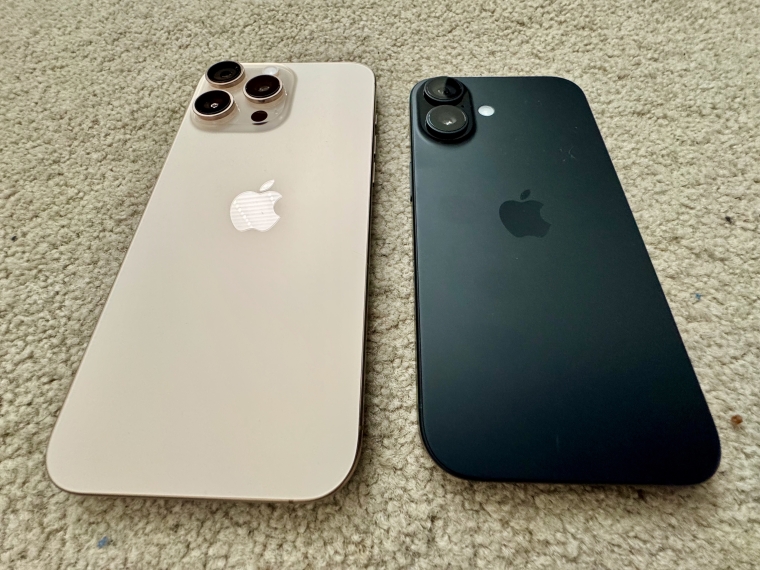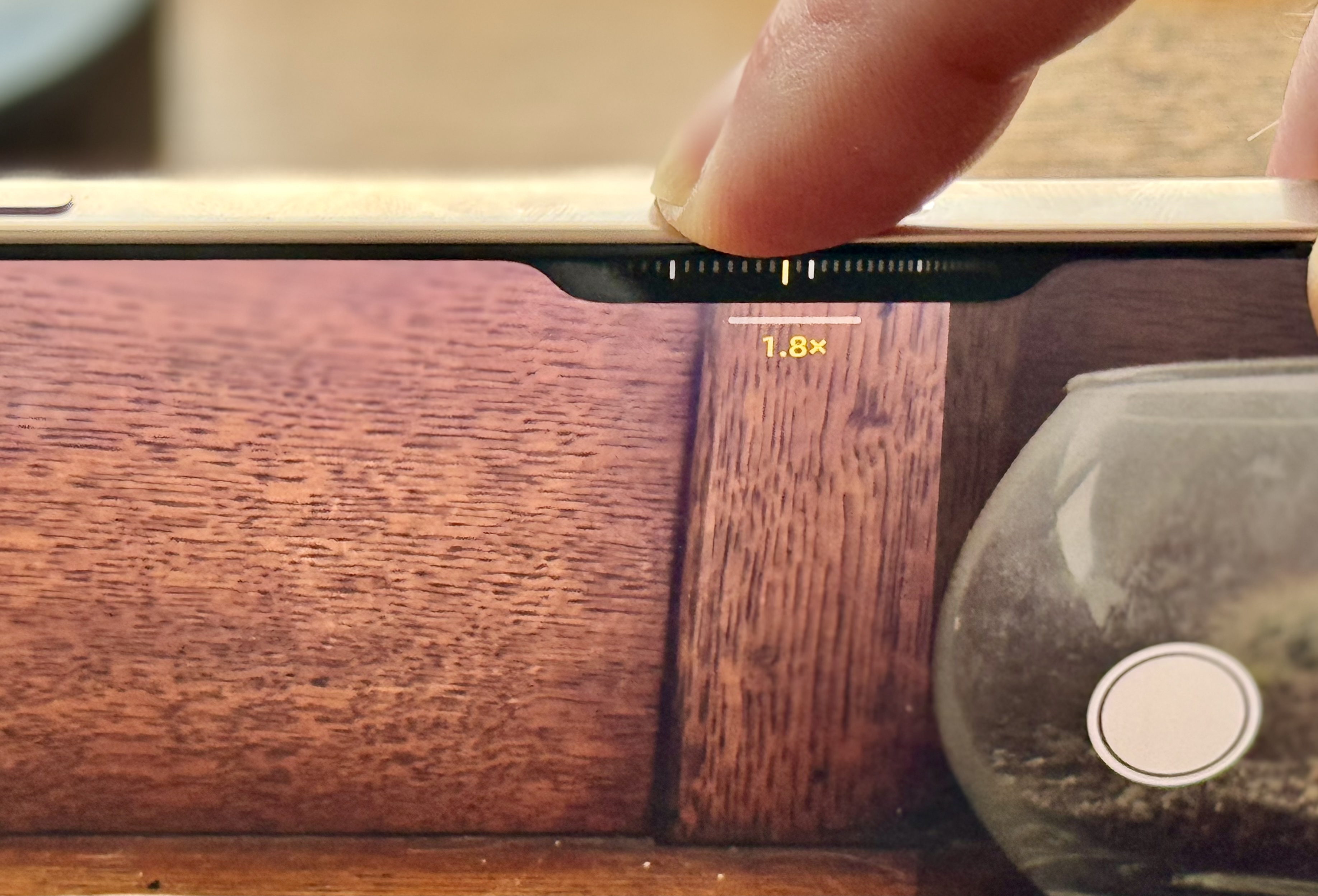
Apple’s annually updated smartphone range is available in the shops and online, but this year the premium devices are a bit different. Why? Well, they are “AIphones” because Apple, like every other tech company, has to pivot towards artificial intelligence (AI), or face sharemarket oblivion.
Which is a shame. AI has its uses, and Apple’s had it tooling away doing neat things with photo enhancement and image recognition, for example. Now it’s generative AI with a strict security and privacy focus, except it’s not ready for this part of the world quite yet. Not unless you install a beta (preview software), change the region and language to the United States.
Ah well, AI will have to wait - and that includes some new things in iOS 18.x which includes one feature I use every day, namely iPhone Mirroring which works great and does exactly what the name says - so let’s see what else is new.
We’re up to number 16 for the iPhone range which has received a bunch of new technology, inside and outside. I was sent an iPhone 16 with 512 gigabytes (GB) of storage, costing $2199 including GST, and an iPhone 16 Pro Max with 1 terabyte (TB) that goes for a grand more.
That price gap is less than expected. Perhaps it reflects Apple's difficult balancing act for iPhones: they are very much premium products that cost accordingly, but at the same time the devices need to cover a wider range of users looking for phones at different price points to ensure sales volumes keep up.
There’s a ton of things to go through, but the first and really great thing I noticed was how easy the migration from an older iPhone was. Dead easy, in fact, a simple matter of putting the devices next to each other, scanning the code pattern displayed with the camera and off you go. All automatically, fast via iCloud and with no issues, including the new iPhones discovering that they needed to be updated to the latest Apple iOS operating systems.
That’s well nerdy stuff, I realise, but in the past shifting phones has been a somewhat fragile process that needed to be done in a particular way. “It just works” is excellent when… err, it works.
Bigger screens
Last year’s iPhone 15 also had a 6.1-inch (diagonally measured) screen, which is the same as the 2024 iPhone 16. There’s also a larger, 6.7-inch iPhone 16 Plus that costs $200 more. The display tech is Super Retina XDR, using organic light emitting diodes (OLED), and the resolution is 2556 by 1179-pixel. This gives it a density of 460 pixels per inch (I too wish tech vendors would stop mixing up metric and imperial measurements like that).
If you wonder why pixel density matters, a high number means you get that “painted on” effect with no jaggies visible. Of course, you need great colour fidelity, a high dynamic range and contrast ratio (the iPhone 16 manages 2,000,000:1) and a maximum of 2000 nits (yes that’s the unit) which is nice and bright. It can also drop down to a single nit of brightness which should be called darkness instead.
The iPhone 16 isn’t small by any means, but the device looks like it is next to the 6.9-inch iPhone 16 Pro Max. While the Pro Max model has the same 460 ppi density as the iPhone 16, and also features a Super Retina XDR OLED, it’s an always-on display with ProMotion variable refresh that goes up to 120 Hertz. That means the screen doesn’t go black like on the iPhone 16 and can see the time displayed, for example. Because it refreshes very slowly, the display doesn’t chew up the battery by always being active.
On the other hand, having a high 120 times per second refresh rate means you get super-smooth animations and scrolling on the screen.
Corning’s Ceramic Shield which Apple says is “tougher than any smartphone glass” protects the display. There’s one way to find out if that's true, but it involves concrete and destruction so I’ll have to think carefully about whether or not to do it.
New cases needed to accommodate more buttons
Spring for the iPhone 16 and the chassis is made of aluminium with a matching colour glass back. My review device was black, and it looks good.
The 16 Pro Max is made out of titanium, with a matt-textured glass back. The phones are rated at Ingress Protection Code 68 (IP68) and will survive six metres of water immersion for up to 30 minutes; so no, taking them for regular snorkelling is not a good idea.
Both feel like the premium devices they are, with iPhone 16 weighing 57 grams less at 170 grams.
Smartphones are quite powerful computers with cameras and providing access to all the features they have through a touchscreen is quite the design challenge. Last year, Apple introduced the Action Button to replace the ring/silent toggle switch that was in its place before. It can be set up to have a range of user-customisable actions, but wait, this year there’s more: the Camera Control button.

The Camera Control button is similar to that multi-function shutter release you find on digital cameras. Give it a deep press, and the camera system starts up. With the camera active, click again to take a picture.
A light press, and you can zoom between the camera focal lengths and other photo and video functions. The user interface opens a notch where you can see the focal length as you zoom by sliding your finger along the Camera Control Button. Plus you can set it to launch other photo apps as well, like Instagram if you’re an influencer unlike yours truly.
Camera Control is quite customisable in other words, but requires user retraining so you don’t go into the menus and functions via the touch screen. I think I like the concept, but I’m not convinced that Apple got the first generation of Camera Control completely right. If it was moved a few centimetres towards the bottom, it would’ve been more ergonomic to operate.
The Fusion camera system in the iPhone 16 range is new too, and more capable than ever. The main camera is a 48 megapixel unit with some interesting new features. Smartphone designers have to resort to all manners of technical workarounds to deal with the fact that they're working with small form-factor devices.

This year Apple has introduced what it calls Fusion for the main camera, which offers 24 mm focal length (in 35 mm film camera terms) and f/1.78 aperture.
Confusingly, it's not the Deep Fusion image processing that arrived in 2019 but a way to take advantage of the 48 MPixels of the camera sensor to get three different "personalities" including a 2X zoom with optical quality, and 12 MPixel resolution. It works well, particularly compared to last year's iPhone 15 Pro Max on which the f/2.2 ultra wide camera takes 12 MPixel shots that don't look as good as those the iPhone 16 Pro Max takes.

On the video side, the iPhone 16 Pro Max lets you shoot at 120 frames per second in 4K resolution. This means you can slow down the action in shots for a cool slow-motion effect in high resolution and dynamic range (HDR). I haven't shot anything in 4K 120 fps that I'd want to show off in public, but the effect of slowing it down in-phone to 60, 30 or 24 fps while keeping the great image quality with Dolby Vision and HDR is very cool indeed.
Not so great? At 4K 120 fps you only get 1x and 2x focal lengths, ditto in the Cinematic video mode in 24 and 30 fps. For the 0.5, 1, 2 and 5x fixed focal lengths, you need to use 4K 60 fps or lower.
Pro videographers can use Apple's ProRes format which provides a neutral colour canvas that can be graded to liking in post production; head down that route, and you'll need fast external storage to shoot at 60 fps and higher.
Apple isn't giving up on spatial video and audio either (see its Vision Pro headgear) so the cameras have been realigned at the back accordingly, for that stereoscopic effect.
Speaking of sound, I think the best video feature is the Audio Mix one. This works with the great microphones on the iPhone 16 Pro Max and isolates sound elements like voice, removing background noise. Audio Mix uses machine learning (there's that AI again) and offers Cinematic, Studio, In-Frame and Standard options. Long story short, audio is hugely important for great videos. With Audio Mix, you can edit the sound recorded for your videos on the iPhone, and make it sound totally professional. It's extremely impressive.
Unfortunately, sickness and rotten weather got in the way of shooting with the iPhone 16 and 16 Pro Max and I haven't been able to use it as much as I'd have liked. That said, the 16 Pro Max is a decent upgrade on the already great 15 Pro Max; if you buy a smartphone for its picture quality, the iPhone 16 Pro Max won't disappoint, quite the opposite. Here's the camera testing lab DXOMarks run down of the iPhone 16 Pro Max camera, which got a a gold rating.
One thing to note this year is that the camera system on the less expensive iPhone 16 is very good too, so if you don't want the 16 Pro Max features like 5x tele for example, the smaller device is worth checking out.
Wi-Fi 7 included, and Ultra-Wideband, GURL
The wireless side of things, Apple put in Wi-Fi 7, which is the latest 802.11be standard. This uses a two-by-two multiple input, multiple output (MIMO) aerial array. In simple terms, more than one radio antenna makes data transmissions go faster and be more stable.
Wi-Fi 7 is really super-fast with wide transmission signal channels; on the TP-Link HB810/BE85 mesh Wi-Fi 7 system, it was easy to get over 1.5 gigabits per second up and downloads on the iPhone 16 Pro Max.
There is as you'd expect 5G cellular wireless with a 4x4 MIMO antenna for gigabit speeds (in theory) with voice support, near field communications (NFC) with reader mode, Express Cards support which would be great if Auckland Transport implemented to pay for bus fares, tap tap, global positioning systems (six of them), Wi-Fi calling and a second generation Ultra Wideband (UWB) chip.
At some point I’ll dive into what UWB actually does but in simple terms, it’s a high-precision radio protocol. Also, in NZ you apply for a GURL which stands for general user radio licence for the tech. Well I thought it was a funny abbreviation at least.
Face ID scans via the front TrueDepth camera is the quick Open Sesame method to access your iPhone or you can do numeric and alphanumeric (letters and numbers) PINs. Here’s Face ID in action:
We recorded an iPhone’s front facing TrueDepth camera doing Face ID with an infrared-senstive camera: pic.twitter.com/nRHyUwGPD3
— Halide + Kino (@halidecamera) September 18, 2024
Other than that, charging is by USB-C and MagSafe at up to 25 Watts, so not hyperfast like some of the Android competition. Battery life is pretty much the whole day.
iPhone is at version 16 but the chips are A18
Apple’s chip naming convention has got ahead of the phones, and this year’s uprated silicon that powers the iPhones is the A18, and for the Pro, well, it's the A18 Pro.
This is a highly-integrated system on a chip, made with a superfine 3 nanometre process by Taiwan’s TSMC. It runs at up 4.04 gigaHertz which is faster than before, has six cores, two of which are performance and four that do the quiet efficiency slog while computing, plus it supports the newer ARMv9.2-A instruction set.
Last year, the iPhone 15 Pro and Pro Max featured the A17 Pro system-on-a-chip (this is when you bundle all the electroncs into a highly integrated small package). In the past, Apple would’ve used the A17 for the “standard” iPhones released this year, but it went straight to A18 instead.
As a consequence, the iPhone 16 and iPhone 16 Pro Max put in fairly similar numbers in GeekBench 6 and Geekbench AI performance testing benchmarks:
Graphics performance is quite a bit faster on the iPhone 16 Pro Max because it has six cores for screen drawing purposes, instead of five like on the iPhone 16.
Both have 8 gigabytes of RAM, so not 12 or 16 GB like some high-end Android phones come with.
| Specification | iPhone 15 Pro Max | iPhone 16 Pro Max | Delta (%) iPhone 16 Pro Max vs 15 Pro Max | iPhone 16 | Delta (%) iPhone 16 vs 15 Pro Max |
|---|---|---|---|---|---|
| Chipset | A17 Pro 3.78 GHz | A18 Pro 4.04 GHz | A18 4.04 GHz | ||
| RAM | 7.48 GB | 7.48 GB | 7.52 GB | ||
| CPU (Single-Core) | 2859 | 3378 | +18.2% | 3213 | +12.4% |
| CPU (Multi-Core) | 7035 | 8339 | +18.5% | 8140 | +15.7% |
| GPU | 27991 | 32892 | +17.5% | 27834 | -0.6% |
| Neural Engine (Single-Core) | 4019 | 4571 | +13.7% | 4274 | +6.3% |
| Neural Engine (Multi-Core) | 23625 | 32011 | +35.5% | 31979 | +35.4% |
| Neural Engine (Total) | 32083 | 44246 | +37.9% | 42213 | +31.6% |
| CPU (OpenCL) | 4032 | 4512 | +11.9% | 4278 | +6.1% |
| CPU (Metal) | 6902 | 7756 | +12.4% | 7370 | +6.8% |
| CPU (Total) | 5614 | 6196 | +10.4% | 5906 | +5.2% |
| GPU (OpenCL) | 4841 | 5723 | +18.2% | 3993 | -17.5% |
| GPU (Metal) | 5678 | 6745 | +18.8% | 4317 | -24.0% |
| GPU (Total) | 5193 | 5964 | +14.8% | 4179 | -19.5% |
The Neural Engine which Apple built into the A18 provides 35 trillion operations per second (TOPS) which sounds impressive, although the number is lower than that which chip rival Qualcomm quotes for its Snapdragon X parts.
How much TOPS matters in the grand scheme of things is still being debated, but the point of neural processing units is to not just speed up AI on your device, but to save power as well through the specialised hardware.
Gaming is boosted by hardware raytracing support and dynamic caching in the graphics circuitry; overall, both the new iPhones are very quick and run cool even with heavy benchmark tests active. If you upgrade from an iPhone that two or three generations before the 16 range, the new devices will seem particularly snappy.
If they fit your budget...
The iPhone 16 and 16 Pro Max are excellent devices, particularly if you use them for photos and video for work, but also for gaming You can't fault their quality, overall design and the features they bring for the relatively high price Apple charges. The upgrade to Wi-Fi 7 is nice too, as it makes it faster to copy over big video files for instance.
That impression of a well-thought out quality product is enhanced by the whole Apple ecosystem that includes accessories such as AirPods, the Watch range, MacBooks and iPads, and the software they run, that all work well together. Seamlessly, as the "technical" expression goes. You need to experience that in order to fully appreciate why people buy into the world of Apple, and stay there happily.
6 Comments
Superb review. Re AI, I just bought a Samsung S23 FE (everything else I can't justify in terms of a matrix of price / usage / perceived value) with the Perplexity app and Proton VPN. Realistically, I don't know what people really want AI solutions for on a phone, except content for social media creativity.
Agree - my expectation is most use will be via my MacBook.......
Note that the photos are 8-bit JPEGs with no HDR etc. Hoping to get a photo gallery feature with better image quality set up at some point.
I've saved heaps and heaps ... With my wife's hand-me-down iPhone 5S and 2nd hand laptops from TradeMe.
Meanwhile, she's spent $000's staying 'up to date'. Her one area of frivolity. So she's forgiven (not really).
Who is smarter? Not going to answer that. I know whose bank balance is healthier. ;-)
(Sorry Juha. Love the review. And might buy if I really needed it. But I don't. What I have, works for me. And the environment & our balance of payments always makes me think twice before reaching for my plastic.)
Realistically the only upgrade I can see myself needing on what I have now is battery life and chaging speed. I got five years out of a $600 mid-ranger and recently got a 30% off deal on a flagship Android that comes with a seven year software support cycle.
The only reason I can see myself needing to update (or trade-in) is to get something with better battery life or charging speed. There's nothing I need that my current phone doesn't already do. I don't even need a laptop, given the DEX version of Android baked into my phone, which lets me plug into my home office's USB-C dock, so I've saved at least what my phone has cost me there too.
OK: old guy rant.
I spent my working life in the technology manufacturing industry - power supplies, network hardware, uP controlled systems.
As such, I really just don't get the fascination with attention-vampire phones that now look like bags of close-to-pointless geegaws you have little control over and can't get rid of, with the bonus of built-in location and activity tracking that treats you like an information-generating product.
And an entry level price of $2200?
I don't like how necessary phones have become to things like travel (try and use Air BnB without one), and how status conscious the whole thing has become. Things like the whole phone unboxing video sub-culture is a mixture of sad and and bewildering, and sadder still that people now invest so much of their identity in a piece of anonymous technology that exploits them.
Given the computational power of even relatively modest phones outstrips the use needs of most people, it's like using a Maybach limousine as a daily driver. Given that mismatch, just how much victims of marketing have we become?
I'm about to dump my Samsung phone becasue of the annoying bloatware and nosy behaviour while I was travelling in Australia. The thing that made me decide? Android Auto's quivering eagerness to load my contacts across to a rental vehicle if I make one wrong keystroke when I get in to a car and need to connect for the one thing I do need: maps. While I've disabled it repeatedly, it keeps reappearing after updates, along with "safety" apps that want to track everything you do, and that Google still tracks you, even if you turn off your location history. I suspect Apple do the same.
The plan is to replace it with a Pixel 7a or 8a, with GrapheneOS to de-google the thing, even if the hardware is still hugely overpowered: and it is about 1/3 the cost of a new iPhone.
Wish me luck.

We welcome your comments below. If you are not already registered, please register to comment
Remember we welcome robust, respectful and insightful debate. We don't welcome abusive or defamatory comments and will de-register those repeatedly making such comments. Our current comment policy is here.